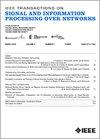DeepTrace:用图神经网络学习优化传染病网络中的接触者追踪
IF 3
3区 计算机科学
Q2 ENGINEERING, ELECTRICAL & ELECTRONIC
IEEE Transactions on Signal and Information Processing over Networks
Pub Date : 2025-02-06
DOI:10.1109/TSIPN.2025.3530346
引用次数: 0
摘要
数字接触者追踪旨在通过技术识别和减轻突发公共卫生事件,从而遏制流行病。在日本等地,追踪感染源的反向接触者追踪对于从超级传播事件中识别COVID-19感染至关重要。本文提出了一种新的数字接触追踪视角,将其建模为在线图探索问题,将前向和后向追踪策略框架为利用流行病网络数据迭代采样的最大似然估计任务。挑战在于组合的复杂性和感染的快速传播。我们介绍了DeepTrace,这是一种基于图神经网络的算法,该算法在收集到新的接触跟踪数据时迭代更新其估计,通过利用拓扑特征来学习优化最大似然估计,以加速学习并提高收敛性。接触者追踪过程结合了BFS和DFS,扩展了网络,追踪了感染源,确保了高效的实时探索。此外,GNN模型通过两个阶段的方法进行微调:使用合成网络进行预训练以近似似然概率,并使用高质量数据进行微调以完善模型。利用COVID-19变体数据,我们证明DeepTrace在识别超级传播者方面超越了现有方法,为可扩展的数字接触者追踪策略提供了坚实的基础。本文章由计算机程序翻译,如有差异,请以英文原文为准。
DeepTrace: Learning to Optimize Contact Tracing in Epidemic Networks With Graph Neural Networks
Digital contact tracing aims to curb epidemics by identifying and mitigating public health emergencies through technology. Backward contact tracing, which tracks the sources of infection, proved crucial in places like Japan for identifying COVID-19 infections from superspreading events. This paper presents a novel perspective on digital contact tracing by modeling it as an online graph exploration problem, framing forward and backward tracing strategies as maximum-likelihood estimation tasks that leverage iterative sampling of epidemic network data. The challenge lies in the combinatorial complexity and rapid spread of infections. We introduce DeepTrace, an algorithm based on a Graph Neural Network that iteratively updates its estimations as new contact tracing data is collected, learning to optimize the maximum likelihood estimation by utilizing topological features to accelerate learning and improve convergence. The contact tracing process combines either BFS or DFS to expand the network and trace the infection source, ensuring efficient real-time exploration. Additionally, the GNN model is fine-tuned through a two-phase approach: pre-training with synthetic networks to approximate likelihood probabilities and fine-tuning with high-quality data to refine the model. Using COVID-19 variant data, we illustrate that DeepTrace surpasses current methods in identifying superspreaders, providing a robust basis for a scalable digital contact tracing strategy.
求助全文
通过发布文献求助,成功后即可免费获取论文全文。
去求助
来源期刊

IEEE Transactions on Signal and Information Processing over Networks
Computer Science-Computer Networks and Communications
CiteScore
5.80
自引率
12.50%
发文量
56
期刊介绍:
The IEEE Transactions on Signal and Information Processing over Networks publishes high-quality papers that extend the classical notions of processing of signals defined over vector spaces (e.g. time and space) to processing of signals and information (data) defined over networks, potentially dynamically varying. In signal processing over networks, the topology of the network may define structural relationships in the data, or may constrain processing of the data. Topics include distributed algorithms for filtering, detection, estimation, adaptation and learning, model selection, data fusion, and diffusion or evolution of information over such networks, and applications of distributed signal processing.
 求助内容:
求助内容: 应助结果提醒方式:
应助结果提醒方式:


